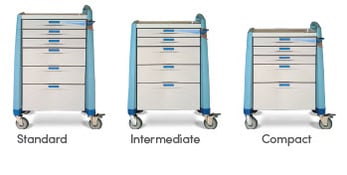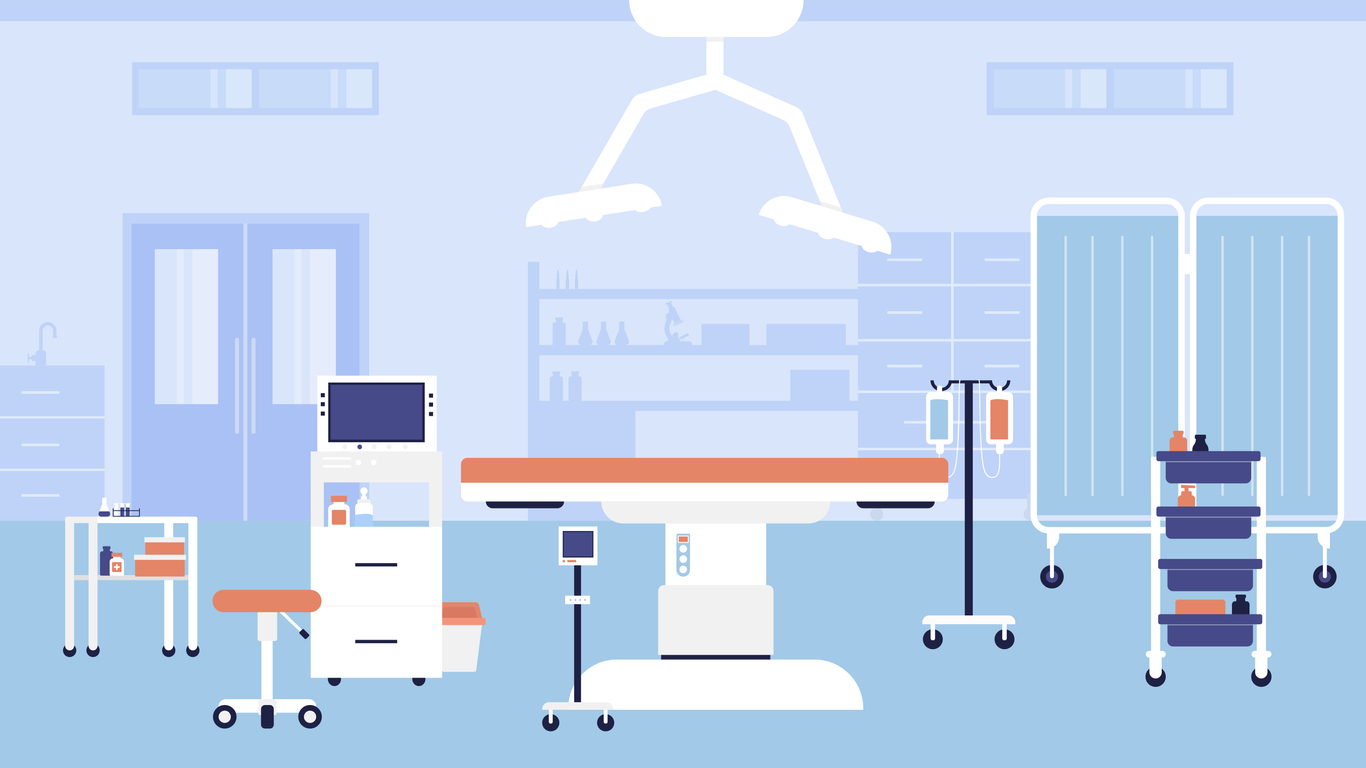
There is so much more to a superior crash cart/emergency cart than just its physical design. In fact, as evidenced by a 2016 thorough analysis, a crash cart’s blend of careful design, functionality, and logical organization can have an effect – negative or positive – on patient safety and code response time.
A hospital facility in the Northeast was using 25-year-old crash carts, accumulated from several different facilities that had been merged over time. The carts were different in height, appearance, access and maneuverability. They were in constant need of repair and no longer met workflow needs.
The hospital initiated a quality improvement project in 2016 to identify common issues with its current carts and to evaluate design solutions for standardizing new crash carts, with a focus on usability and patient safety.
A Code Committee was established with members that included nurses, physicians, pharmacists, respiratory therapists, purchasing, and administrators. The Code Committee’s survey of the nursing staff uncovered three main challenges: cluttered carts, difficulty locating stock, and inconsistent cart access.
 The Code Committee identified and tested two different crash carts, one metal and one HDPE plastic. The carts were evaluated for the following factors.
The Code Committee identified and tested two different crash carts, one metal and one HDPE plastic. The carts were evaluated for the following factors.
- Maneuverability – lightweight, easy to move, smooth rolling lockable casters
- Functionality – drawer design for workflow needs, orderly storage for supplies and medications
- Durability – constructed to last
- Stability – designed for stable maneuverability
- Design – cart aesthetics and ergonomic, user friendly design and accessories
- Security access – security for medications with quick access
- User-friendly design – including drawer design, flexible organization and dividers, and drawer labeling
The last factor – user-friendly design – was the strongest consideration. Users had to quickly and easily identify critical medications and supplies. Placement of accessories and ample workspace had to provide an ergonomic workspace and improve workflow. Cart height, weight, and movement had to accommodate nurses. Lastly, cart security was tested to ensure medications were secure, but quickly accessible for timely code response.
Following the cart evaluation by the Code Committee and the nurse testing, this Northeast hospital chose the Avalo Emergency Cart from Capsa Healthcare.
The Code Committee highlighted these findings:
- The Avalo drawers are carefully designed with a selection of drawer dividers to provide optimal visibility, grouping and organization of medications and supplies. Drawer depths of 3”, 6”, and 9” high can be can configured to fit workflow.
- Drawers open fully to access contents in the rear and remain closed when cart is in motion.
- The cart locks in front with a breakaway plastic snap-lock that is easily visible for checking the contents’ integrity, but can be quickly unlocked for timely code response.
- Placement of accessories including the sharps container, oxygen tank, and writing shelf provide an ergonomic workspace. The swiveling defibrillator tray enables clinicians to keep a clean workspace on the cart top.
- The cart is easily maneuvered. The low center of gravity makes the cart stable and light. Upgraded wheels and a steering handle speed up movement. The braking system keeps the cart stable and securely parked until needed.
The Northeast hospital used the Avalo Series integrated divider system to re-organize their medication and patient supplies drawer by drawer. Stock was analyzed; some items were removed, and others added. Stock positions were tested and finalized, and a “best practices” was set with the expectation that the Avalo crash cart would successfully facilitate timely code responses.
The 2016 project concluded with a successful redesign and standardization of the hospital’s crash carts.
CME is proud to partner with Capsa Healthcare and provide the Capsa Healthcare products to our customers. CME can help with the logistics of a cart replacement project. We receive, stage, assemble and deliver the carts direct-to-site. Check out our We are CME video. Call 800-338-2372 for more information.
About CME: CME Corp is the nation’s premier source for healthcare equipment, turnkey logistics, and biomedical services, representing 2 million+ products from more than 2,000 manufacturers.
With two corporate offices and 35+ service centers, our mission is to help healthcare facilities nationwide reduce the cost of the equipment they purchase, make their equipment specification, delivery, installation, and maintenance processes more efficient, and help them seamlessly launch, renovate and expand on schedule.



